Animal identification Normal Reading Worksheets for Ages 6-9
4 filtered results
-
From - To
Unlock your child's reading potential with our Animal Identification Normal Reading Worksheets, specifically designed for ages 6-9! These engaging worksheets foster fun and interactive learning, helping children enhance their reading skills while exploring the animal kingdom. Each worksheet is crafted to encourage critical thinking and improve vocabulary through captivating visuals and thematic activities. Kids will enjoy identifying different animals, relating them to their habitats, and creating connections with nature. Perfect for both classroom and home use, our worksheets make reading lessons enjoyable and effective. Inspire your child's love for reading and a curiosity about wildlife today!
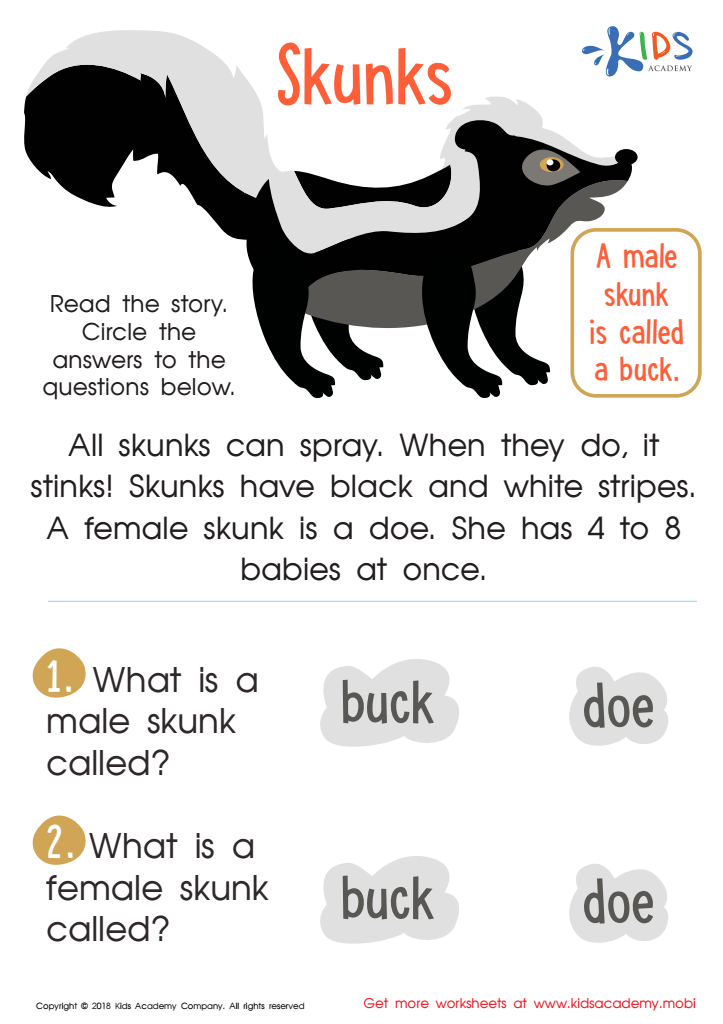

Skunks Worksheet
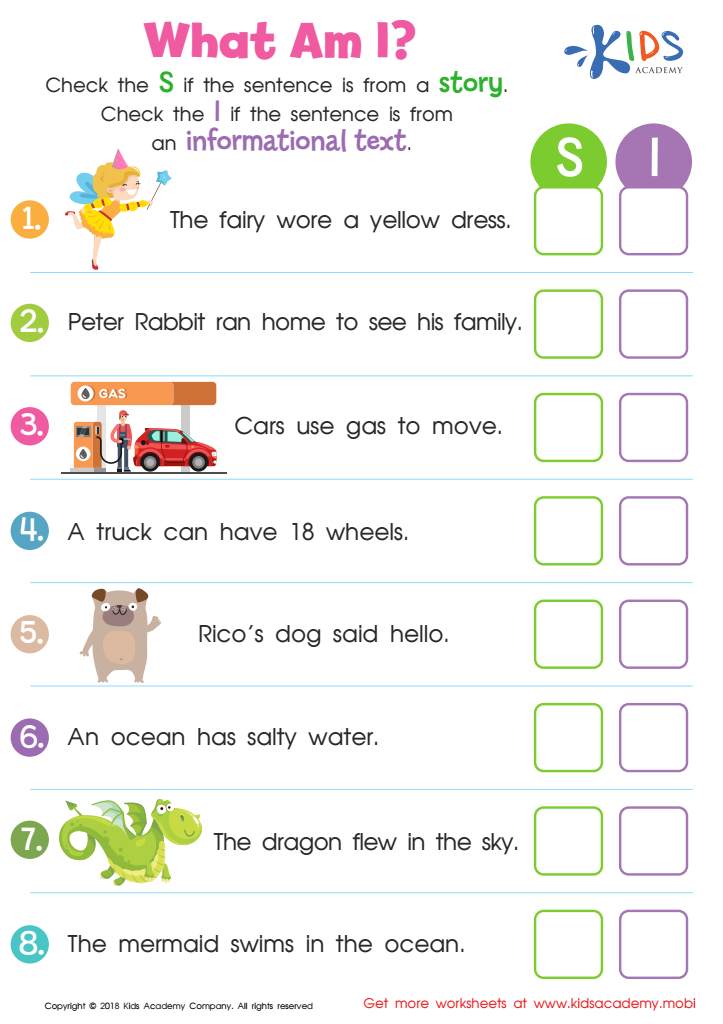

What Am I? Worksheet
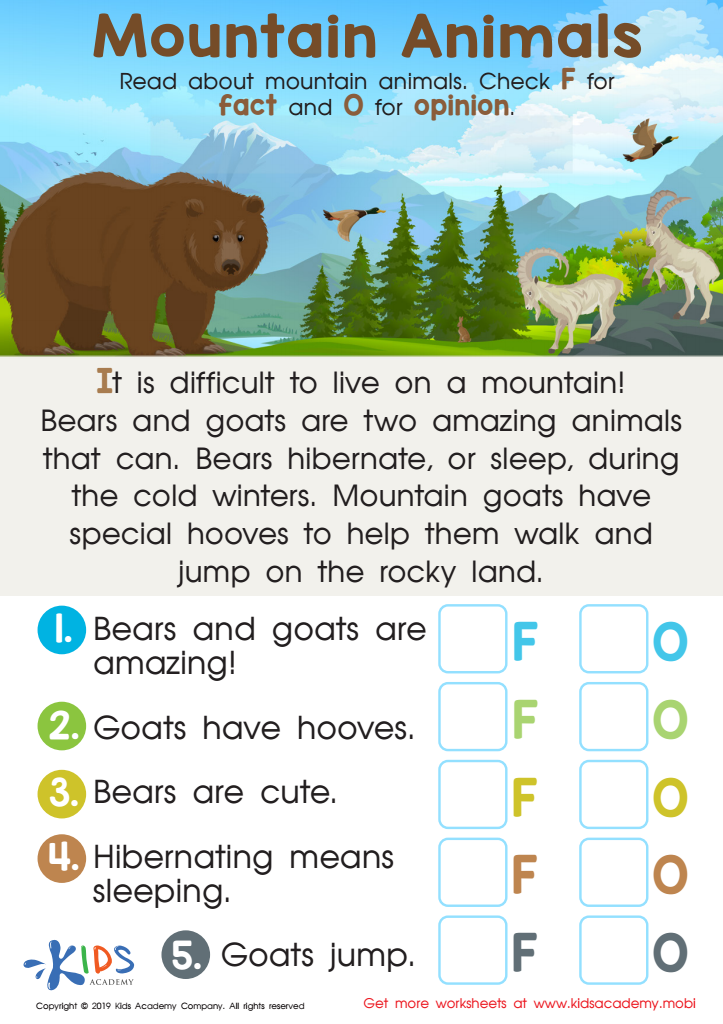

Mountain Animals Worksheet
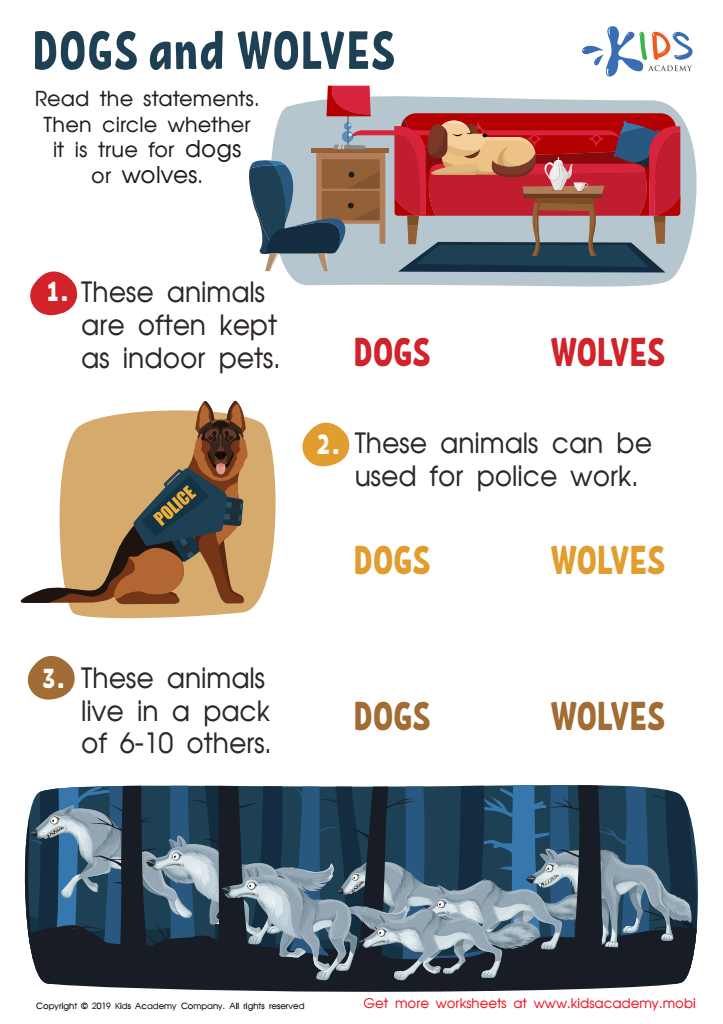

Dogs and Wolves Worksheet
Animal identification skills are vital for children aged 6-9, and both parents and teachers should care about fostering this knowledge. Understanding how to identify different animals enhances a child’s observational skills and encourages curiosity about the natural world. At this age, children are naturally inquisitive, and engaging them through activities such as animal identification instills a sense of wonder and respect for wildlife.
Learning to recognize animals helps improve vocabulary and comprehension as children describe what they see in books and the real world. It also nurtures critical thinking and problem-solving skills: children learn to categorize animals and understand their habitats, diets, and behaviors.
Moreover, animal identification fosters empathy and awareness of environmental conservation. By recognizing the diversity of species and their significance in ecosystems, children can develop a sense of responsibility towards wildlife and nature.
Parents and teachers can incorporate fun activities, such as matching games, nature walks, and educational stories, to make learning enjoyable. Ultimately, animal identification cultivates a lifelong appreciation for nature, lays the foundation for science education, and encourages thoughtful, informed citizens who care about the environment and its creatures. This knowledge is crucial for building a healthy, sustainable future.

 Assign to My Students
Assign to My Students




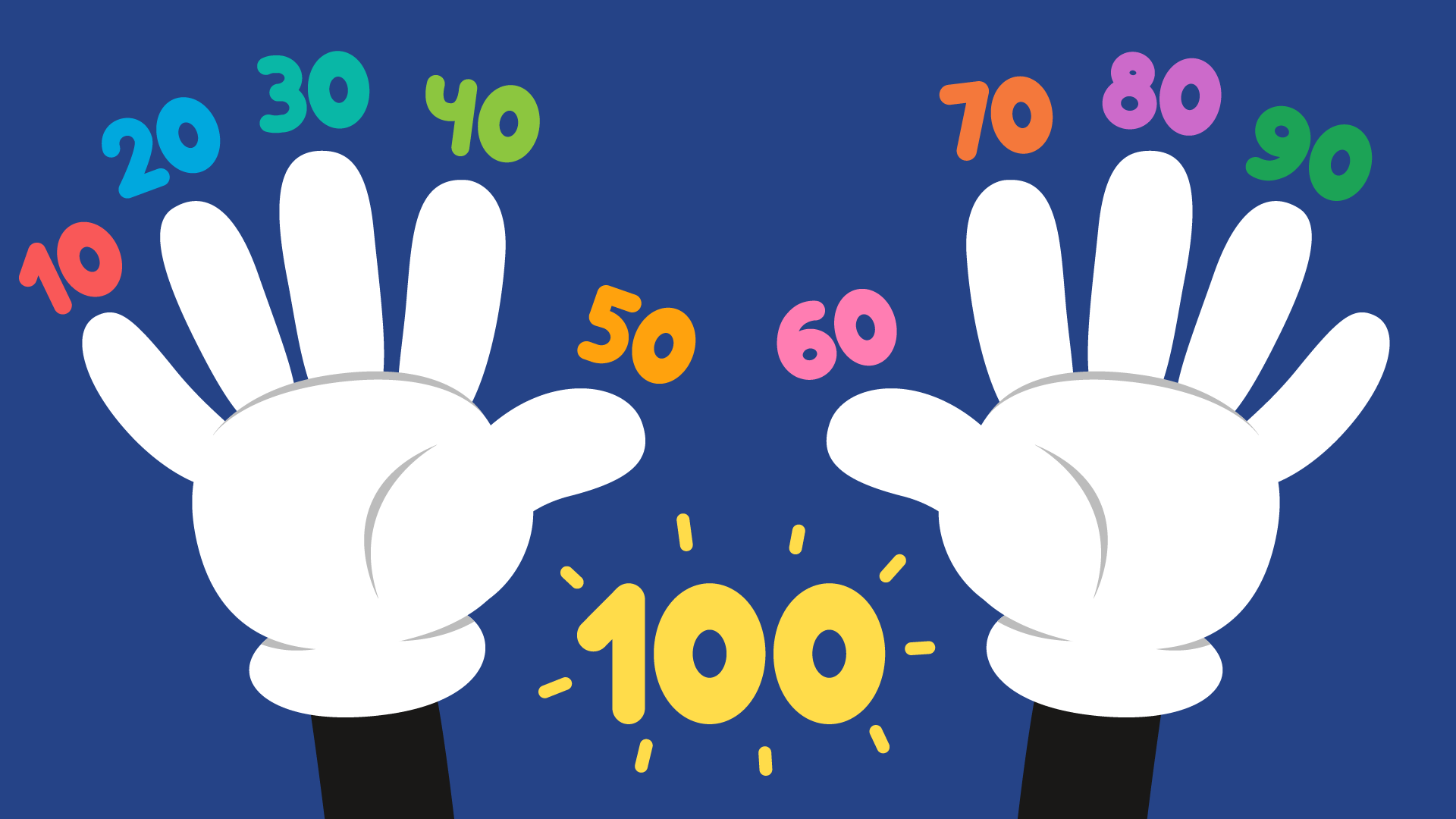
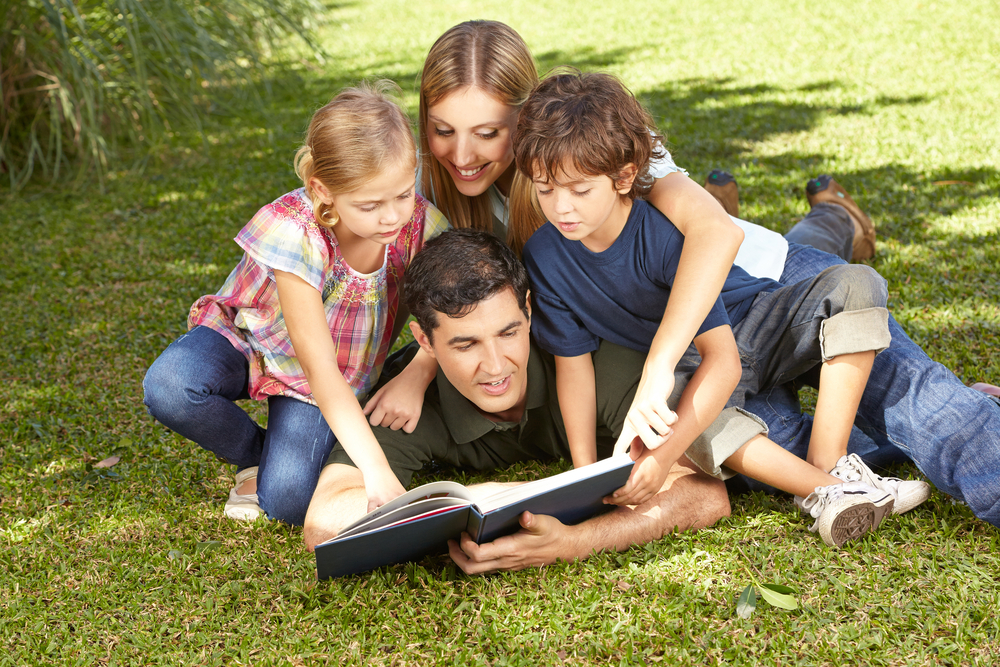

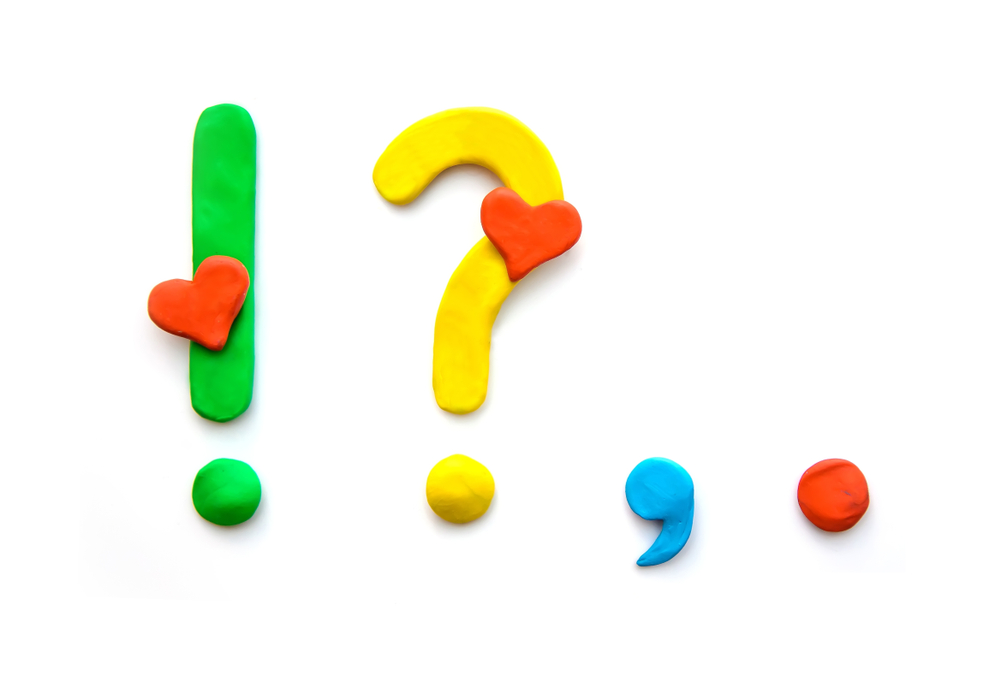
.jpg)











